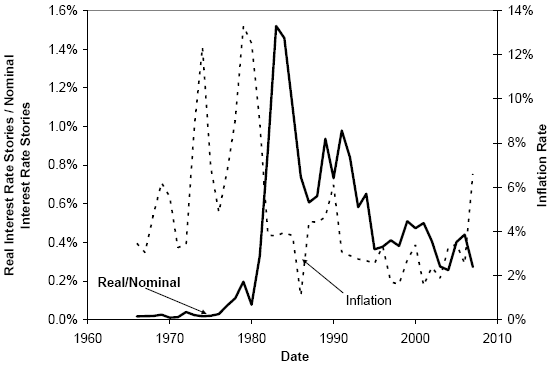Are asset prices still in a behavioral bubble, sustained at least in part by wrongly using nominal rather than real interest rates in valuation calculations? In his October 2007 paper entitled “Low Interest Rates and High Asset Prices: An Interpretation in Terms of Changing Popular Economic Models”, Robert Shiller examines the Fed model-like belief that that long-term asset prices are generally high because monetary authorities are keeping long-term interest rates low. Using interest rate and inflation data for 1871-2007 and more recent behavioral evidence, he argues that:
- Long-term U.S. nominal interest rates, compared to an 1871-2007 average of 4.72%, have not been especially low in recent years.
- The 1871-1997 average real U.S. long-term government bond yield is 2.40%, close to the (August 2007) 2.32% yield on U.S. inflation-indexed bonds.
- The correlation between historical asset prices and nominal interest rates is actually very weak, but the popular misperception that the relationship is strong may help frame today’s elevated valuations as justified.
- The concept of a real interest rate, though highly relevant in judging the reasonableness of asset prices, appears to have had its day
and is dying. (See the chart below.) Instead, the public seems attached to money illusion, the failure to recognize that dividend and earnings projections include inflation. - In addition to mechanisms such as speculative feedback and social epidemics, changes in valuation model popularity are important in explaining today’s high asset prices.
The following chart, taken from the paper, tracks the number of U.S. newspaper articles that mention “real interest rate” as a percentage of articles that mention “interest rate” for each year during 1966-2007, along with the contemporaneous annual inflation rate. While the frequency of references to real rates has always been low, it peaks in loose relationship to the high inflation rate experience of the 1970s. Since then, attention to real rates decays rapidly.

In summary, changing public beliefs in how the economy works (and thereby valuation models) substantially affect long-term interest rates and asset prices. Current beliefs, focused on nominal rather than real interest rates, foster irrational overpricing of assets.